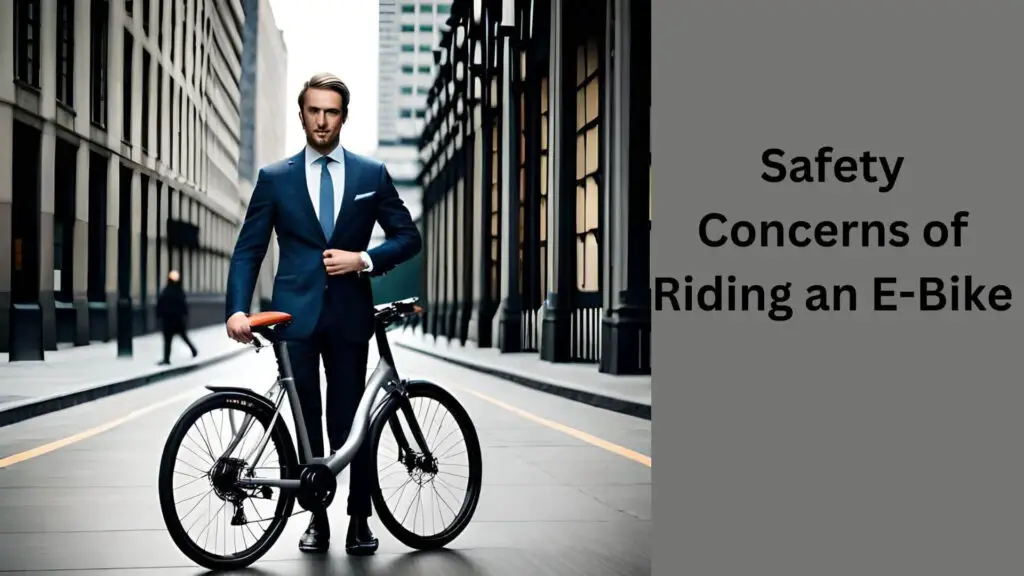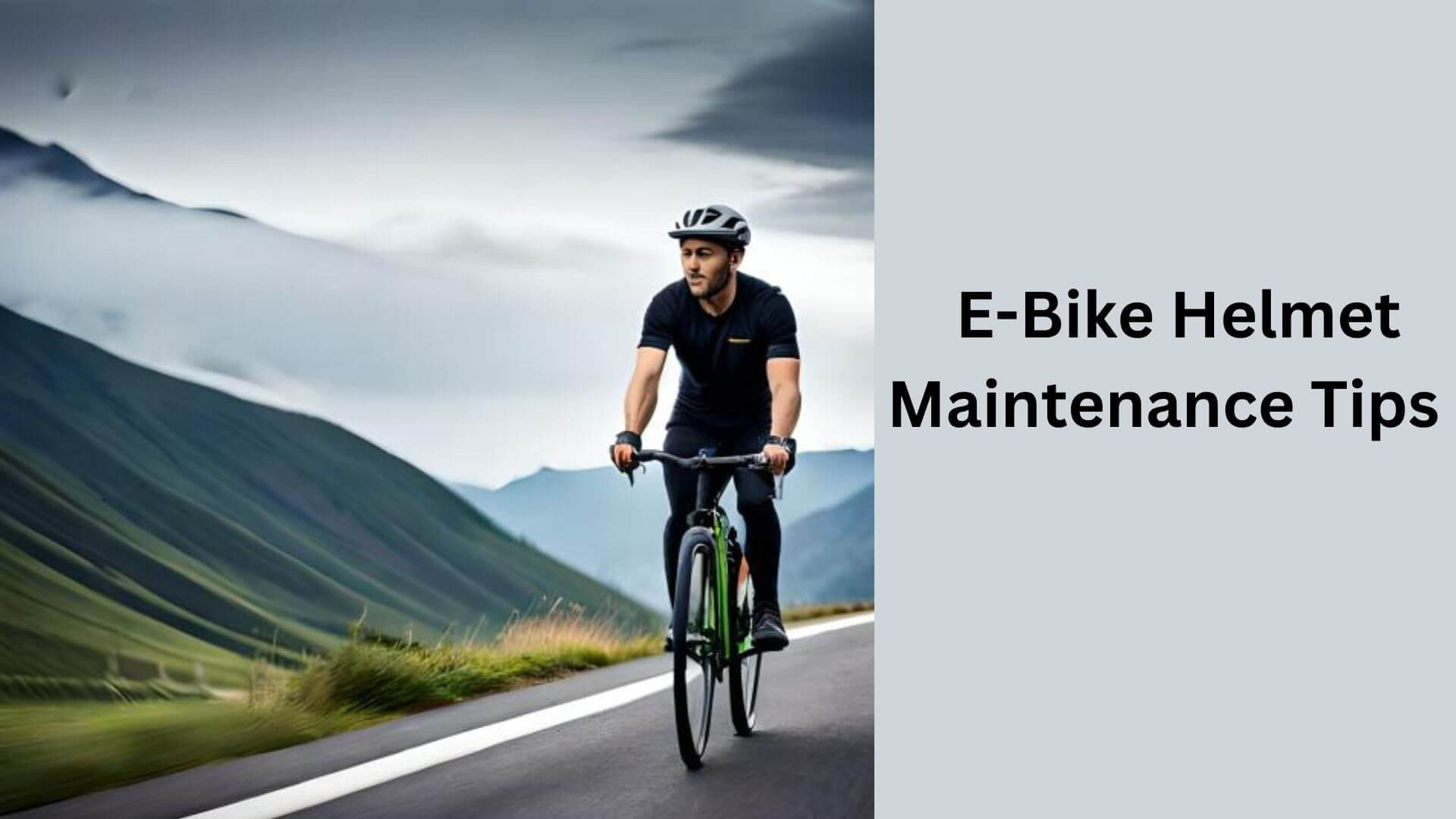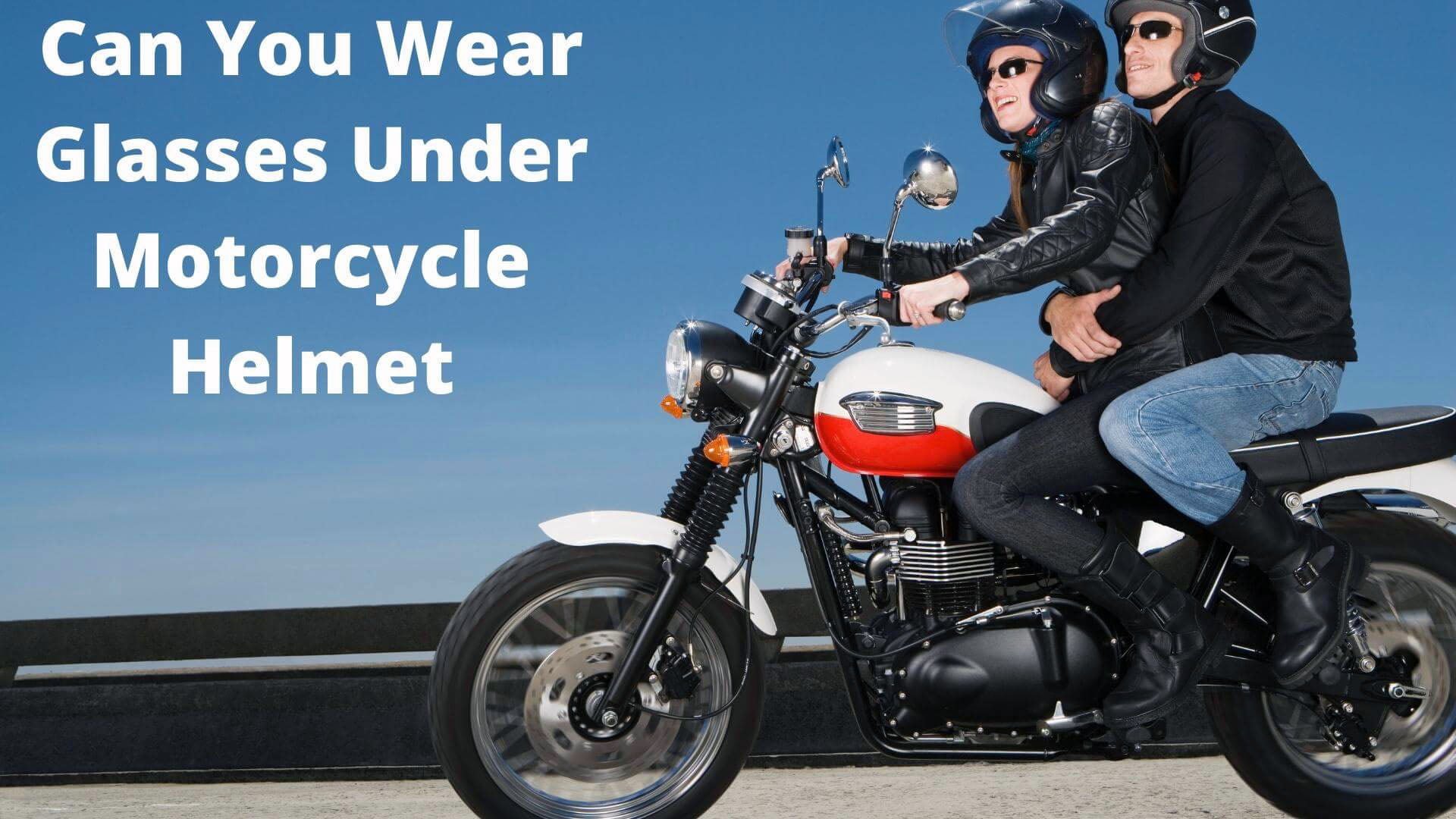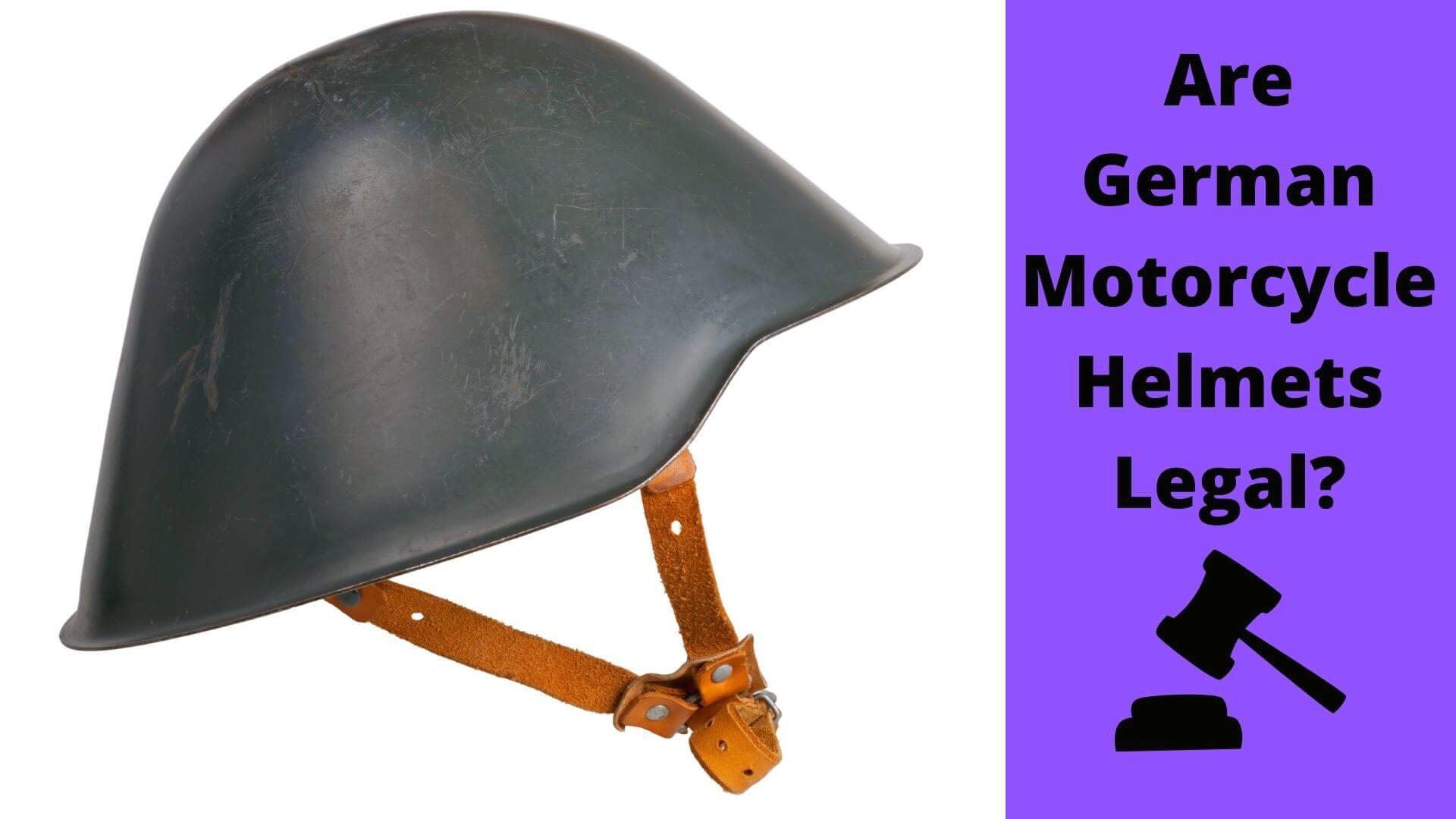Should You Wear a Helmet on an E-Bike?

Electric bikes, or e-bikes, have become a popular mode of transportation for many people. They’re environmentally friendly, affordable, and easy to use.
However, safety is always a concern regarding any transportation, and e-bikes are no exception.
One of the most important safety measures you can take while riding an e-bike is wearing a helmet. However, many bikers ask me if I should wear a helmet on an e-bike.
The short answer is that wearing a helmet while riding an e-bike is highly recommended to ensure your safety.
Even though e-bikes may not be as fast as motorcycles, accidents can still happen, and head injuries can be severe.
Protecting your head with a helmet can significantly reduce the risk of injury or even death in case of an accident.
In this article, I’ll discuss why wearing a helmet is crucial for e-bike riders and how it can significantly reduce the risk of head injuries. So, let’s get started and learn more about e-bike safety!
Why Wear a Helmet On an E-Bike?
Here are some key points on why wearing a helmet on an e-bike is essential:
- Head injuries can be severe: If you fall off an e-bike or are involved in a collision, you can sustain injuries that can be life-threatening or cause long-term damage. Wearing a helmet can reduce the risk of severe head injury by up to 85%.
- E-bikes can go fast: Depending on the model, e-bikes can go up to 28 miles per hour. This means that the risk of injury in the event of an accident is higher than it would be on a regular bike.
- Laws may require it: In many states and countries, it is required by law to wear a helmet when riding an e-bike. Failing to wear a helmet can result in fines and legal consequences.
- It’s a simple safety measure: Wearing a helmet is a simple and effective safety measure that can help protect you in the event of an accident.
- Helmets are designed for comfort: Modern helmets are lightweight, breathable, and comfortable in any weather. Various styles and sizes are available to ensure a proper fit.
- Alternatives may not be enough: While wearing reflective clothing and investing in a bike with safety features such as lights or reflectors can increase your visibility and safety, they may need to provide more protection in an accident. A helmet is the best way to protect your head and brain from injury.
Factors to Consider When Choosing an E-Bike Helmet
Choosing a fitting helmet is essential to staying safe when riding an e-bike. Here are some factors to consider when choosing an e-bike helmet:
- Safety standards: Look for a helmet that meets safety standards such as CPSC, EN1078, or ASTM. These standards ensure that the helmet has been tested and certified to provide a certain level of protection.
- Fit: A helmet that does not fit properly can compromise its ability to protect you in the event of an accident. Look for a helmet that fits snugly but comfortably on your head, with no gaps between the helmet and your scalp.
- Style: Helmets come in various types, from traditional road bike helmets to more aerodynamic designs. Choose a variety that fits your personal preferences and riding style.
- Ventilation: Riding an e-bike can be hot work, especially in warmer climates or during intense rides. Look for a helmet with adequate ventilation to help keep you cool and comfortable.
- Weight: While you want your helmet to be sturdy and protective, you want it to be manageable.
- Brand and price: Higher-priced helmets may offer more advanced features or materials, but a well-made helmet from a reputable brand can still provide excellent protection at a more affordable price point.
Remember, even the best helmet can only do so much to protect you in the event of an accident. Always ride cautiously, obey traffic laws, and know your surroundings when riding your e-bike.
Read More: How to Maintenance E-Bike Helmet?
Pros and Cons of Wearing a Helmet on an E-Bike
Wearing a helmet on an e-bike can offer several advantages, but there are also some drawbacks. Here are some pros and cons of wearing a helmet on an e-bike.
Pros
- Protection: Wearing a helmet can protect your head from injury in an accident. This is especially important if you ride in busy areas or uneven terrain where accidents are more likely to occur.
- Visibility: Wearing a brightly coloured helmet can increase your visibility on the road and make it easier for other drivers to see you.
- Legal compliance: In some states and countries, wearing a helmet while riding an e-bike is mandatory. You may face fines or other penalties if caught without a helmet.
- Peace of mind: Wearing a helmet can give you peace of mind and help you feel more confident on the road, making your ride more enjoyable.
Cons
- Comfort: Some people find helmets uncomfortable, especially in hot weather or during long rides. This can discourage them from wearing a helmet and put them at risk of injury.
- Fashion: Let’s face it, helmets are only sometimes the most stylish accessory. Some people may avoid wearing a helmet because they don’t want to mess up their hair or look uncool.
- Expense: Helmets can be expensive, especially if you’re looking for a high-quality model. This can deter some people, especially those on a tight budget.
- Restricted vision and hearing: Wearing a helmet can limit your peripheral vision and hearing, making it harder to detect potential hazards on the road.
Helmet Laws for E-Bikes

The legal requirements for wearing a helmet on an e-bike vary depending on the state or country you’re in. For example, some states have mandatory helmet laws for e-bikes in the United States, while others do not.
It’s essential to research the laws in your area and ensure that you comply with them. Here are some things to keep in mind:
- Check the local laws: Look up the helmet laws in your state or country to determine whether wearing a helmet is mandatory for e-bike riders.
- Understand the consequences: If you’re caught riding an e-bike without a helmet in a state or country where it’s mandatory, you could face exemplary or other penalties.
- Choose the fitting helmet: If you decide to wear a helmet, ensure it meets the safety standards set by your state or country. Look for a helmet that fits well and provides adequate protection.
Safety Concerns of Riding an E-Bike

Riding an e-bike can be a fun and eco-friendly way to get around, but it is essential to understand the safety concerns involved. Here are some potential safety concerns to keep in mind:
- Speed: E-bikes can go faster than traditional bicycles, with some models capable of reaching up to 28 miles per hour. This increased speed can make it more difficult to react to obstacles or unexpected situations on the road.
- Balance: E-bikes are generally heavier than traditional bicycles due to their battery and motor. This can make them more challenging to balance and control, particularly at slow speeds.
- Awareness: When riding an e-bike, you must be aware of your surroundings and the traffic. This includes watching for other vehicles, pedestrians, and obstacles in your path.
- Battery life: E-bikes rely on their battery to operate, and it is essential to monitor the battery life to ensure that you do not run out of power while riding. Running out of battery power can leave you stranded and unable to continue riding.
- Mechanical issues: Like all vehicles, e-bikes can experience mechanical problems like brake failures or flat tires. It is essential to regularly inspect your e-bike and make any necessary repairs or replacements to ensure that it is in safe working order.
- Helmet use: As discussed, wearing a helmet is a crucial safety measure when riding an e-bike. Ensuring your helmet is properly fitted and fastened is essential to provide the best possible protection in an accident.
Considering these safety concerns and taking appropriate precautions, you can enjoy the benefits of riding an e-bike while minimizing the risk of injury or accidents.
Read More: Are Gravel Bike Helmet Necessary?
FAQs About Should You Wear a Helmet on an E-Bike?
Is it necessary to wear a helmet while riding an e-bike?
A helmet is necessary while riding an e-bike for your safety.
What kind of helmet is best for riding an e-bike?
A traditional bike helmet may be sufficient for road riding, while a full-face helmet may be better for off-road riding.
Can I ride an e-bike without a helmet?
Riding an e-bike without a helmet in some states and countries is illegal. Even if it is not required by law, wearing a helmet for safety is still essential.
Are helmets uncomfortable to wear?
Modern helmets are designed to be lightweight and breathable, making them comfortable to wear in any weather.
What are some alternatives to wearing a helmet?
While helmets are the best way to protect your head, wearing reflective clothing and investing in a bike with safety features such as lights or reflectors can also increase your safety while riding an e-bike.
Final Thought
In conclusion, wearing a helmet is essential when riding an e-bike. Helmets protect your head and brain from injury in an accident and can reduce the risk of a severe head injury by up to 85%.
By choosing the right helmet, ensuring a proper fit, and complying with local helmet laws, you can enjoy a safe and enjoyable ride on your e-bike.

Hey, I’m Hrithik Hossain. I am the head of helmethacks.com, which specializes in safety helmets. I am looking to connect with anyone interested in purchasing a helmet or who has any questions about different types of helmets. I have over 8 years of experience as a helmet expert, and I can’t wait to help you find the perfect helmet for you. I can help you with any questions regarding helmets, from the best brands to fitting, style, and more! I really enjoy keeping people safe by ensuring they have the best protection possible.







